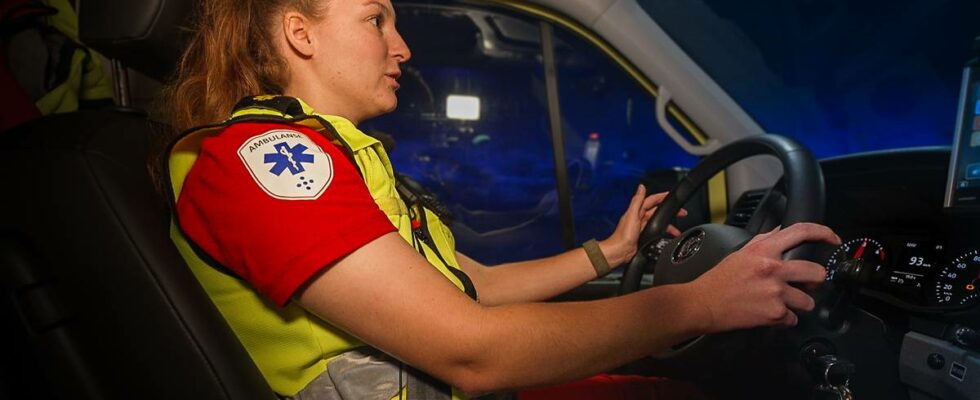The case in summary: New ambulances in Norway struggle to maintain a high enough speed during emergencies due to stricter environmental requirements from the EU. To reduce emissions, the car manufacturers have installed smaller engines in the ambulances, which results in lower speeds. This makes the job more demanding for the drivers. Especially on Norwegian roads with steep slopes and narrow sections. Norway buys too few ambulances to be able to put pressure on the car manufacturers to get specially made cars with bigger engines. Electric cars that can be used as ambulances could be a solution, but for now the range is not good enough. The summary is made by an AI service from OpenAi. The content is quality assured by news’s journalists before publication. Ambulance specialist Camilla Arseth Holte presses the gas pedal all the way until it hits the rubber mat in the new ambulance. The speedometer needle slowly moves up from 87 to 88 kilometers per hour. – Actually, I should have had a speed of around 130 kilometers an hour by now, says Arseth Holte while the sirens wail on the roof and the car pulls up the Ellingsøy tunnel in Ålesund. Something has happened to the ambulances in recent years. They go slower. Camilla Arseth Holte has to plan her overtakings better now that the ambulance doesn’t get up to speed as quickly as before. Photo: Eirik Haukenes / news Environmental requirements slow down the pace Jon-Ola Wattø is head of department for pre-hospital joint services at Helse Midt-Norway. One of his tasks is to buy ambulances for the entire country. – We get to do our job and the patients must be as safe as before. But we don’t have access to extra power like we used to, says Wattø as he “pops” the hood of a new Volkswagen crafter. Jon-Ola Wattø sits on the national group for purchasing ambulances. Photo: Eirik Haukenes / news The same type of car that just pulled up the steep tunnel at 88 kilometers per hour. The lack of power is under the hood. – The reason is environmental requirements that the EU has set for car manufacturers. The discharge must go down. Smaller engine gives less speed In order to reduce emissions from new cars, car manufacturers have installed smaller engines. While the old ambulances had a three-litre engine, the new ones have a two-litre engine. On Norwegian roads, there are steep slopes, narrow sections with many slowdowns and the need to quickly increase speed again. With a smaller engine, the driver’s job becomes more demanding. In the Ellingsøytunnel, Camilla Arseth Holte has got the car up to 94 kilometers per hour. – If I could give in a little more, it would have been easier to get by faster and I didn’t have to plan as much as I have to now, she says. Too small a customer Norway buys in just over a hundred ambulances a year. There is too little to put pressure on car manufacturers to have specially made cars with larger engines. – I think it is difficult to do anything about it until we get electric cars that can be used as ambulances, says Wattø. He clarifies that they have no desire to be the first to come out with such cars. Currently, the range is not good enough. The engines in new ambulances are not specially adapted to the job they have to do. The engine is the same as that delivered in a normal van of the same type. Photo: Eirik Haukenes / news Møller Bil is a brand dealer for Volkswagen in Norway. They indicate that they deliver cars based on the tender criteria they have received. Published 28.08.2024, at 15.10
ttn-69
Ambulances cannot drive fast enough due to environmental requirements from the EU – news Møre og Romsdal – Local news, TV and radio

